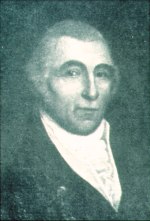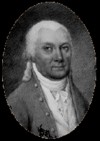




Most outsiders viewed colonial Albany as a cultural monolith - whose greedy merchants and disagreeable townspeople have been defamed to the world as "___ Dutch __!" Like all stereotypes, that characterization is based on limited and superficial appreciations of the everyday community and its people. The Colonial Albany Social History Project was formed to understand the community on its own terms - by comprehending the individual and collective lives of its diverse peoples or minorities. Together, they made up a community majority that gave colonial Albany its unique character.
Because the people of colonial Albany, from its leaders to its rank-and-file citizens, were so diversely constituted, they should not be expected to speak with one historical voice on matters so important as their relationship to the British empire (of which they were a part) or to the British monarchy (to whom most native sons and daughters felt no inherent allegiance). To say that Albany was predominately pro or anti British on the eve of the American Revolution is to oversimplify a complex story that began with the founding of the community more than a century before.
That complexity leads us to believe that a fuller story may be told through the individual lives of its diverse people. In many ways, this website and the Colonial Albany Social History Project itself is dedicated to explaining why (case-by-case) the people of colonial Albany rejected a way of life under which they succeeded and even prospered and instead became supporters of a "crusade for American Liberties" that turned colonists into revolutionaries during the 1770s.
This essay provides basic access to the stories of those Albany people who did not support the revolutionary movement and thus were branded as "Tories" or "Loyalists." It also will serve as a point of departure for a more in-depth look at "Loyalism in Colonial Albany" in the future!
We begin by offering two dramatic acts that begin to reveal how things were shaping up in the colonial city. The first concerned resistance to the Stamp Act in 1766 while the second signaled the "beginning of the end" in June of 1776.
Albany's historically visible loyalists were a relatively small group. They numbered perhaps fifty and mostly were men. A substantial number of other community people did not support anti-British and then Revolutionary measures and activities. However, at this point, the most telling parts of their stories remain historically mute.
That said, the historically visible loyalists fall into five general groups: Royal officials; those with economic ties to the royal government or the British economy; the spouses of the first two groups; a larger but less definable number of "passive loyalists"; and would-be neutrals. Yet another notable group of non supporters left Albany prior to the outbreak of hostilities.
Royal officials included Mayor Abraham C. Cuyler, Stephen De Lancey - the city and county clerk, Sheriff Henry Ten Eyck, postmaster John Monier, justice of the peace John Munro, and the Reverend Harry Munro - rector of St. Peters Anglican church.
Royal adherents included merchants John Stevenson, James Dole, Edmond Butler, and William Kane; skippers William Pemberton, Robert Hoaksley, John Roff, and John Fryer; and innkeepers Richard Cartwright and his son, Albany native Benjamin Hilton, Jr., and James Furnival.
Spouses and widows included: Jane Gregg Edgar, Genevieve Masse Lydius, Janet Glen Cuyler, and the notorious Widow Clement. A draft essay looks at them in more depth.
Passive loyalists and would-be neutrals included native sons Baltus Lydius, Dr. Henry Van Dyck, Gysbert Fonda, Cornelis Glen, and the Van Allen brothers.
Among the most historically prominent of a long list of those who left included relative newcomers George Wray, States Dyckman, John Macomb and his son-in-law Francis Pfister, Thomas Swords, Ebenezer and Edward Jessup, the Robertsons, and the Tunnicliffs. Suspected Stamp Tax collector Henry Van Schaack returned to his native Kinderhook several years earlier. The unexpected death of Sir William Johnson in July 1774 left Albany royalists without a leader and perhaps with a future quite different than it might had been had he lived!
This website already has introduced you to a number of individuals whose lives are the community-based cast for the early Albany story. More than 3,000 early Albany people lived through the so-called era of the American Revolution. Their individual and collective stories are central to The Other Revolutionaries: The People of Albany and American Independence, 1763-83, a major research and programming initiative now being undertaken by the Colonial Albany Project. A draft chapter currently titled "Incivility in a Civil War" will consider the many variations of their particular plights and ordeals.
Stereotypes! Use your imagination! Most of the outside observers, on whose written accounts descriptions of the Albany community historically have been based, did just that instead of seeking to understand the often bewildering actions and events that prompted their presently bewildering (in the face of historical evidence) conclusions and observations. In time, this website will consider the statements made by each of the large number of outside observers from Isaac Jogues to Timothy Dwight and beyond.
first posted: 1999; recast and last revised 11/27/18